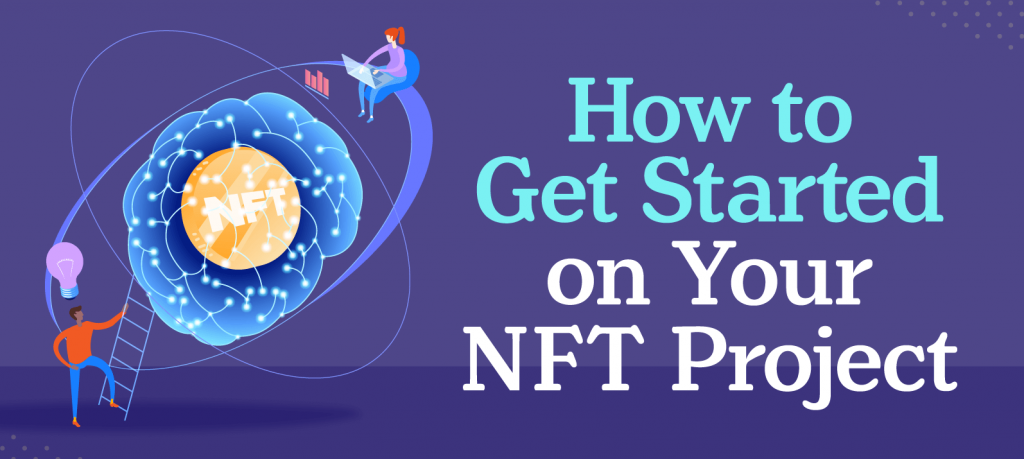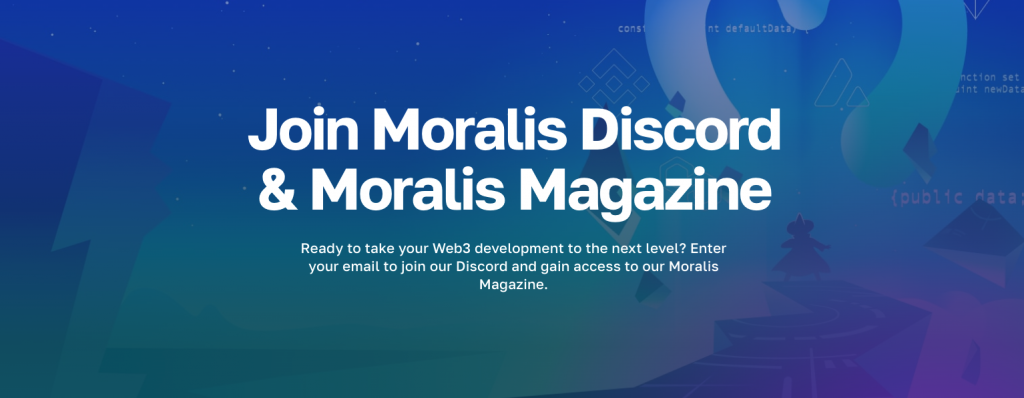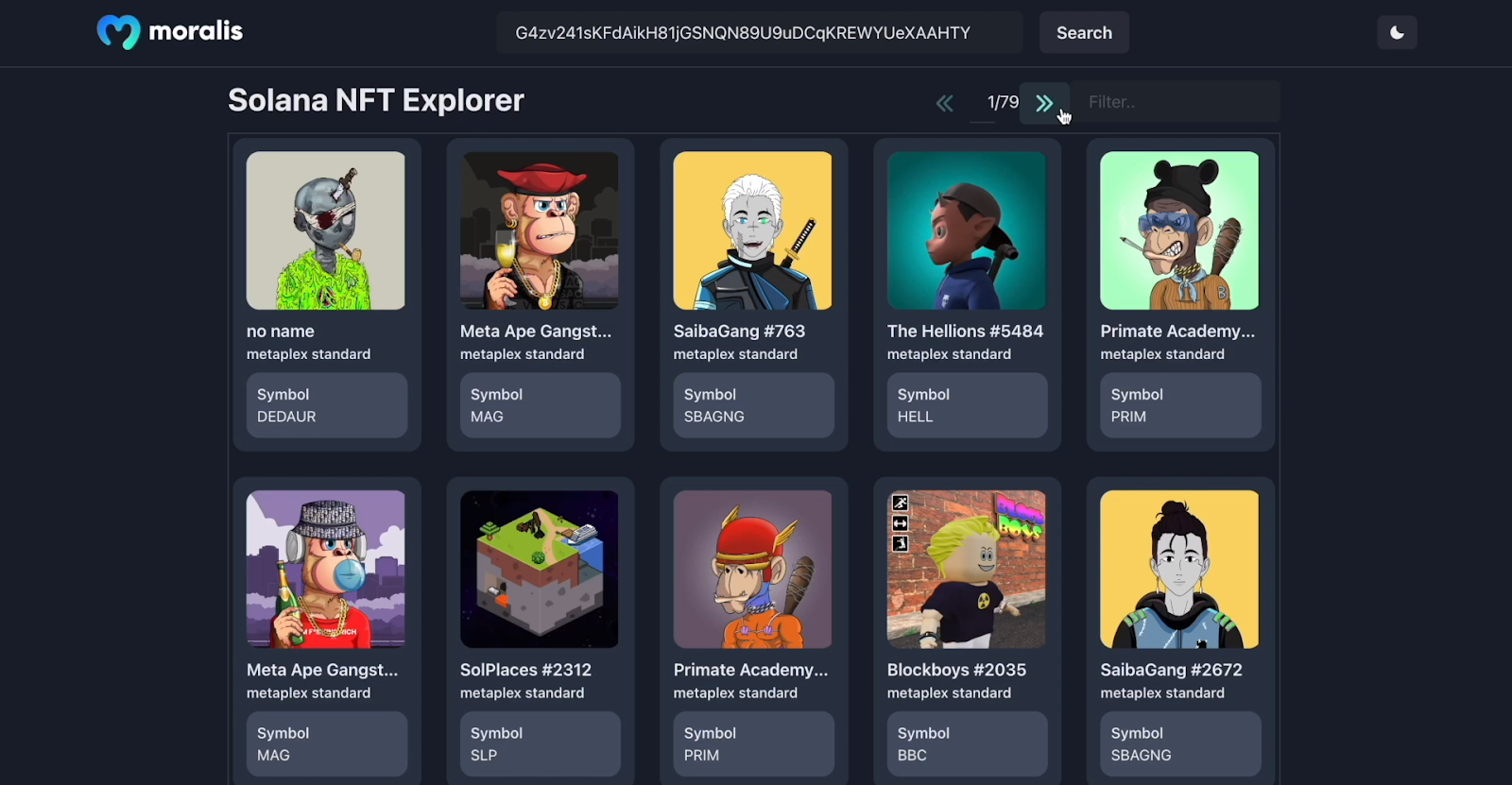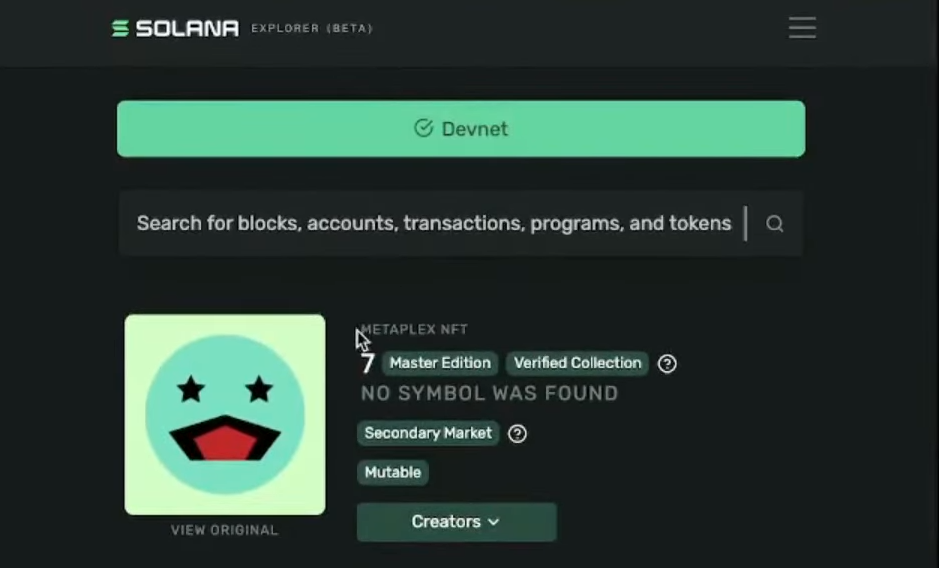Knowing how to create an NFT project, either for yourself or your clients, offers countless opportunities. However, there is so much more that goes into the process than just “creating” a project focusing on non-fungible tokens. Taking on such a project and doing so lightly can lead to failure, which is quite common, unfortunately. But, with a well-established plan, suitable tools, and expert guidance, you can get started and launch your NFT project with success. Sounds interesting? If so, then this guide is for you!
Today’s guide will focus on Solana, a popular non-EVM chain. However, similar principles apply when focusing on Ethereum and EVM-compatible chains. Furthermore, the tool making the process of creating an NFT project as straightforward as possible is Moralis, a cross-chain compatible and enterprise-grade Web3 API provider.
As we move forward, we’ll take you through the necessary steps to create an NFT project, starting with a plan overview. Once we’ve outlined the steps you need to consider, we’ll also inform you of various essential tools. This is where things vary between Solana and EVM-compatible chains. However, you can fetch on-chain data in all instances with Moralis’ Web3 API. Furthermore, if you decide to create some useful NFT utility, Moralis will help you create a killer NFT dapp. Also, you can effortlessly implement Web3 authentication using Moralis’ Auth API. Plus, if you want to create an NFT project that will offer NFT minting functionality, you’ll want to interact with smart contracts. If so, using the Moralis Streams API is the go-to choice. That said, let’s begin and explore how to create an NFT project!

NFT Project Plan – How to Get Started
Creating an NFT project starts with a proper thinking process and decision-making. After all, the clearer you get on your NFT project’s goals, the smoother the implementation process will be. As such, let’s look at some of the important aspects you must cover before focusing on the main topic of this guide.
- Determine whether you want to build your NFT project around existing NFTs or if you want to create your own NFTs. There are already many existing NFTs. Thus, you can create NFT browsers, NFT galleries, and much more without actually creating your own NFTs.
- Decide whether you want to focus on Solana or EVM-compatible chains. If your NFT project is an NFT browser, you’ll be able to switch between Solana and EVM-compatible chains. However, if you want to create your own NFTs, you’ll use different tools.
- If you decide to create your NFTs, consider their NFT utility. Furthermore, do you want to focus on digital collectibles, art, NFT gaming, gating, etc.? This will also help you determine whether you will initiate individual or bulk minting. Moreover, it will help you decide if you want to mint all your NFTs in advance or implement lazy minting. The latter means that your users can mint NFTs.
- Will your NFTs include a visual part (PNGs, JPEGs, MP4, etc.)? Will you create the graphics yourself, or do you want to partner with an artist or outsource that part?
- How will you market your NFT project? Web3 is still in its infancy, and “building it, and they’ll come” is more common than in Web2. However, in most cases, you need a proper marketing strategy to succeed. For instance, creating a strong community can be extremely impactful.

Don’t Overthink Your NFT Project’s Details
The above guidelines and questions cover some of the most important aspects of the “how to create an NFT project” quest. Of course, all sorts of sub-questions will arise while tackling the above guidelines. A word of advice, you’ll want to address most of them before going live.
However, you don’t want to become a victim of “analysis paralysis”. Remember, you will initially focus on testnets/devnets anyway. In addition, keep in mind that most successful people agree that the best way to learn is by making mistakes. Moreover, creating a whitepaper for your project might help you cover all the essential questions.

Essential Project Tools
NFT projects can come in various forms. Similarly, the essential NFT project tools vary as well. For instance, if you focus on building a dapp around existing NFTs, you will need a frontend application, a backend application, and a reliable, high-quality NFT API. As far as the frontend and backend go, you can use legacy tools. For example, both React and NextJS can help you create the frontend if you’re JavaScript proficient, and you can also take care of the backend with NodeJS. Fortunately, there are many frameworks and programming languages you can use.
However, when it comes to adding Web3-related backend functionality, Moralis – the ultimate Web3 API provider – is the go-to tool. You only need your Moralis Web3 API key, which you can get with a free Moralis account. Then, you can use all sorts of API endpoints by simply copying and pasting short snippets of code to your backend.
So, when you’re interested in creating an NFT project that doesn’t involve creating NFTs, you can get by with legacy dev tools and Moralis.
On the other hand, if you want to create new NFTs, you need to expand your toolbox a bit, especially if you want to create the visual parts of NFTs yourself. In that case, software such as Photoshop will come in handy. Nonetheless, you can also explore more centralized solutions, such as OpenSea. After all, many NFT marketplaces also enable you to mint tokens. However, if you want an NFT project to be treated seriously, you’ll want to stay clear of these platforms or use them only for NFT trading. If so, you must get acquainted with smart contracts (on-chain programs) and tools such as Remix, Hardhat, and Metaplex.

What Do You Need?
In the following list, we’ll look at the tools you want to use when creating an NFT project.
Building and Testing NFT Dapps:
- Legacy dev tools
- Moralis
- Web3 wallets (e.g., MetaMask and Phantom)
Creating NFTs:
- Visual part of NFTs
- Photo-editing and video-editing software
- Photo-editing and video-editing software
Files and Metadata Storing:
- Decentralized storage solutions (e.g., IPFS)
NFT Minting (EVM):
- Web3 wallets
- Solidity or Viper to create EVM-compatible smart contracts
- OpenZeppelin to get verified smart contract templates
- Remix IDE and Hardhat to compile, deploy, and verify smart contracts
NFT Minting (Solana):
- Metaplex’s Candy Machine
- Rust for projects that may require unique on-chain Solana programs
- A Solana wallet
Additionally, marketing and community-creating/managing tactics and tools are also needed. With the tools covered, let’s look at how to make your project successful!

How to Make an NFT Project Successful?
If you measure success in NFTs sold and gained profits, you may only need some actual NFTs and hype-creating marketing tactics. However, we believe that success comes by adding value to Web3 and, most importantly, to the end user. As such, you need a good plan, interesting NFT utility, solid marketing, and a ton of persistence and willpower to offer value to your users. Of course, even if you have all of these aspects, success is not guaranteed. Hence, don’t be afraid to take risks and focus on the things you learn along the way. Maybe your first project fails; however, this will give your second project a greater chance to succeed. Make sure your primary focus is on adding value and learning. By doing so, you will have a successful NFT project launched sooner rather than later.
That said, we recommend first getting comfortable with the above-listed tools and working on your NFT ideas. Start practicing your dapp developing and minting skills. Once you have established a solid foundation, you can start creating an initial NFT project. Moreover, you can use the following section to create a project on the Solana chain if you want to test your skills. Or, you can visit Moralis’ resources and tackle other NFT-related tutorials. For instance, you can learn how to create an NFT-gated website in Django.

How to Create an NFT Project
In the following sections, you’ll do two quick overviews, plus watch two detailed video tutorials for some Solana example projects focusing on non-fungible tokens. In the first one, we’ll show you how to build a Solana NFT explorer dapp. By building a Solana NFT explorer dapp, you’ll get to learn how to work with Moralis’ Solana API. In the second one, you’ll have a chance to learn how to create your own Solana NFT. By creating your own Solana NFT, you’ll get acquainted with Solana NFT mint tools – Metaplex’s Candy Machine v2.

Example 1: NFT Explorer Project
If you decide to use the video below, you’ll have a chance to learn how to create an NFT project that fetches NFT data on Solana. To help you decide if you want to take on this project, let’s look at our finished example dapp. As you can see in the following screenshot, our example dapp is initially empty:

However, once we paste a specific Solana NFT project address into the entry field and hit the “Search” button, you get to see the power of our explorer:

As you can see, our dapp neatly displays NFTs in two rows. For each NFT, the dapp displays its image at the top. Below the image, we can see its name and then the symbol at the bottom. In addition, once the results are displayed, a page navigator and an entry field to “filter” appear:

Furthermore, the filter enables you to search NFTs by symbols:

Here’s the video tutorial showing you how to create the above-demonstrated Solana NFT explorer project.
At the 1:30 timestamp, you’ll see how to obtain your Moralis Web3 API key, which is the gateway to create projects the easy way:

Example 2: Solana NFT Minting Project
If you completed the above example project, you now know how to create an NFT project on Solana that focuses on displaying NFTs. As such, you are also ready to learn how to mint Solana NFTs. Fortunately, this is quite simple when using Metaplex’s Candy Machine v2. Essentially, you just need to copy the code from the Metaplex documentation.

If you decide to mint your own Solana NFTs, the video tutorial below will show you how. Once you mint your NFTs, you’ll be able to view them using Solana Explorer:

So, here’s the video tutorial with all the details on how to create an NFT project that involves minting NFTs:
How to Create an NFT Project – Summary
In today’s guide, you had a chance to learn all you need to know to start creating an NFT project. You explored the most important aspects when creating your project. Hence, you now know that proper planning is an essential part. You also know that the exact tools vary depending on the type of NFT project you want to create. After all, you don’t have to create your own NFTs to build NFT dapps. But, if you want to produce your own NFTs, you need specific tools to create and store NFT files and to mint the actual tokens.
Additionally, you had a chance to complete two Solana NFT projects. Hence, you learned how to create an NFT project focusing on existing tokens or minting new NFTs.
If you enjoyed today’s guide and the two example projects, make sure to visit the Moralis documentation, the Moralis YouTube channel, and the Moralis blog. These three resources can help you become an NFT and dapp developer in no time for free. Aside from NFT development, these outlets tackle all sorts of Web3 development topics. For instance, some of the latest articles explain how to use Firebase as a proxy API for Web3, how to integrate blockchain-based authentication, how to create dapps using a NodeJS Web3 example, how to write Solana smart contracts, and much more.
Last but not least, you might be interested in landing an awesome crypto job. In that case, becoming blockchain certified significantly improves your chances. As such, make sure to consider enrolling in Moralis Academy. Moreover, if you are new to crypto, start with the “Crypto for Beginners” course.
